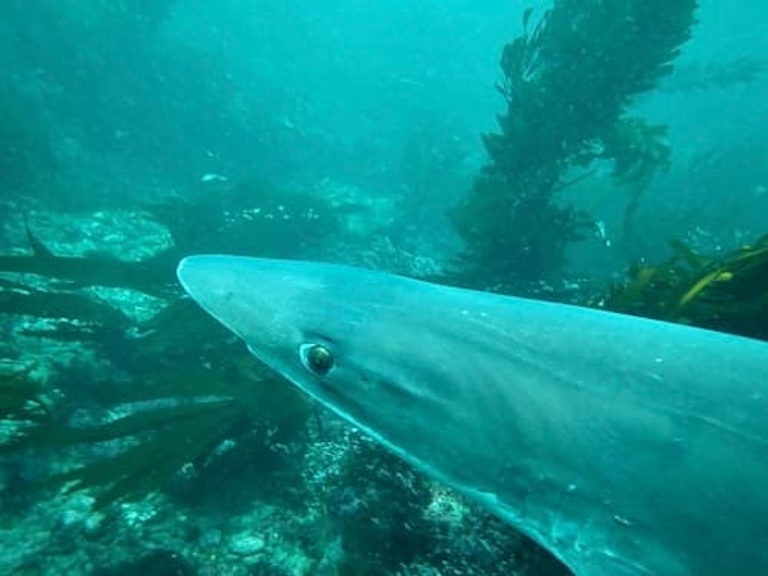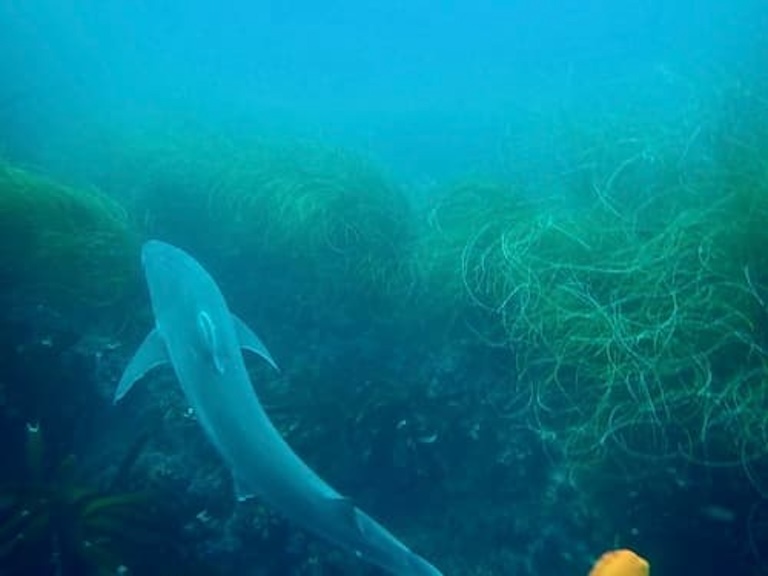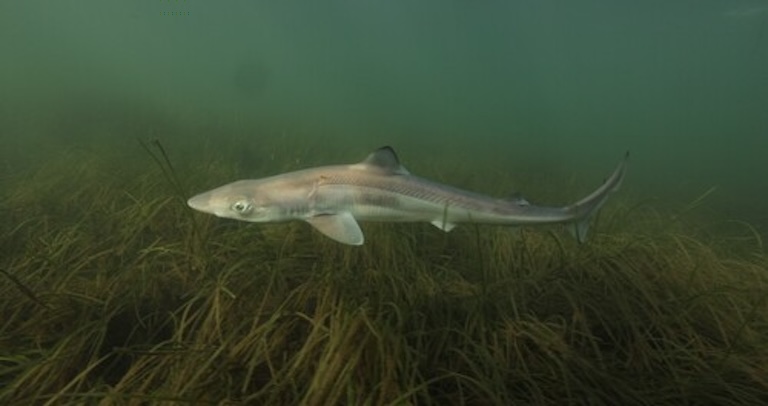Tope Shark Profile
The UK isn’t the place you’d typically associate with sharks, but there are at least 21 resident species, and a number of transient and sometimes lost ones, like the possible sightings of the Great White, whose general absence is actually a bit of a mystery.
But sharks are in every sea and ocean, whether we see them or not, and while this is a fact today, the future of sharks isn’t as certain.
One of Britain’s rarest sharks, the Tope shark, is also found in every other corner of the globe, though in dwindling numbers. And this isn’t the natural process of a failed evolutionary experiment or the mindless destruction of some distant elites, this is the fault of everybody.

Tope Shark Facts Overview
| Habitat: | Mostly benthic marine, somewhat pelagic, around and below 200m |
| Location: | Northern Europe, Western North America, South America, Southwestern Africa and Southern Australia/New Zealand |
| Lifespan: | At least 45 years old |
| Size: | Up to 2 m (6 ft 7 in) long |
| Weight: | Up to 45 kg (100 lb) |
| Colour: | Dark bluish grey, sometimes brown-grey, with a white belly |
| Diet: | Opportunistic predators of fish and cephalopods |
| Predators: | Larger sharks |
| Top Speed: | Unknown |
| No. of Species: | 1 |
| Conservation Status: | Critically Endangered (IUCN) |
The Tope shark is a ground shark, in more ways than one. Members of this most diverse order of sharks, they spend most of their time around the sea bed, sometimes found as deep as 800 metres.
Unfortunately, this doesn’t save the shark from humans, who have used it as a rich source of food to the point where it is now critically endangered before we even really understand much about its behaviour or ecology.
Interesting Tope Shark Facts
1. They’re ground sharks
Groundsharks are members of the order Carcharhiniformes, which contains over 270 species and is the largest order of sharks currently known.
This order houses a lot of the most commonly-known sharks like the elegant requiem sharks and the large and brutish tiger sharks.
Tope sharks are from neither family but from a separate one known as the Triakidae, or hound sharks.
There are nine genera in this family and only 40 species between them, and they’re characterised by having a pair of large dorsal fins and nictitating, or translucent, membranes on their eyes. The tope shark is a medium-sized member of this family, also often called the school shark.

2. They’re highly migratory
Tope sharks are common around the UK, which is quite exciting for a country of people whose most memorable experiences with wild animals usually involve getting stung by a wasp at a barbecue.
Animals tagged in the UK showed up as far South as the Canary Islands and as far North as Iceland. Likewise, Australian tope sharks have popped up 1,200 km further along the coast and also in New Zealand.
In the US, they can be found on the West Coast as North as Washington and may move Southward to Mexico and California, where they breed. But these populations have shown to be loyal to a home base, to which they return every three years.
This is an unusual cycle for animals, in fact, it’s the only record of what’s called “Triennial migration” in the animal kingdom. 1
3. They’re yo-yo divers
It’s not just horizontal movements that the tope shark is known for, it also engages in a series of vertical dives in quick succession, much like the so-called yo-yo diving seen in harvest divers and fish farm workers.
It’s suggested that this is a form of energy conservation, minimizing the cost of locomotion by sinking under the shark’s own weight before swimming back up to repeat the process while foraging.
These dives appear to be more common and deeper at night, and diurnal cycles see the shark spending around 80% of its time within 10 metres of the surface. 2 3
4. They breed in estuaries
The breeding areas for this species appear to be similar to that of the bull shark, and many other fish species.
Pupping and nursery areas are found in shallow, protected bays and estuaries, where the more brackish nature of the water may prevent larger predators from taking advantage of the young sharks.
Unfortunately, this puts them right where humans can find them. 4

5. Soupfin sharks
Another name for this species suggests a controversial association of the species with the sharkfin soup industry.
While shark fin soup is a major and grotesque threat to many shark species, it’s outshone in number by the sheer amount of bycatch that contributes to their decline.
Shark finning bans and regulations have increased more than tenfold between 2024 and the prior studies into shark deaths, yet shark fishing mortality increased by about 76-80 million sharks per year in the same time frame.
The focus on finning distracts from the far more pressing and real threat of overfishing, in which the vast majority of the Western world is complicit.
The Tope shark is still hunted as an important food source for many countries, and while it is widely distributed, its numbers are now so low that it is critically endangered.
6. They’re in trouble
The IUCN lists the threats to this species worldwide, from the shark fin industry in China to the discarded bycatch in the Northeast Atlantic, the declines in the Southwest Atlantic from intensive fishing, and both deliberate and bycatch mortalities from South Africa of up to 400 tonnes a year.
Globally, a quarter of shark and ray species are now threatened with extinction specifically due to overfishing, but there are other threats to the Tope, including the degradation of its habitat, especially its nursing areas.
7. There is hope
Some subpopulations are showing signs of recovery. Management measures are thought to be potentially responsible, and this should provide proof of concept for further efforts.
The EU bans the landing of Tope entirely in most of its waters, and it’s illegal to hunt it deliberately at any scale. In Australia, there’s a concentrated effort to increase numbers using a species-specific School Shark Rebuilding Strategy and other management measures to reduce catch.
So, it looks like conservation could save the species, but much more research is needed to identify the best path forward.
Tope Shark Fact-File Summary
Scientific Classification
| Kingdom: | Animalia |
| Phylum: | Chordata |
| Class: | Chondrichthyes |
| Order: | Carcharhiniformes |
| Family: | Triakidae |
| Genus: | Galeorhinus |
| Species: | galeus |
Fact Sources & References
- “Large-scale migration of a school shark, Galeorhinus galeus , in the Southwestern Atlantic”, sciELO Brazil.
- Gil Iosilevskii (2012), “Energetics of the yo-yo dives of predatory sharks”, Science Direct.
- Juan Martín Cuevas (2014), “Diving behaviour of the critically endangered tope shark Galeorhinus galeus in the Natural Reserve of Bahia San Blas, northern Patagonia”, Springer Nature Link.
- “Tope”, IUCN Red List.
